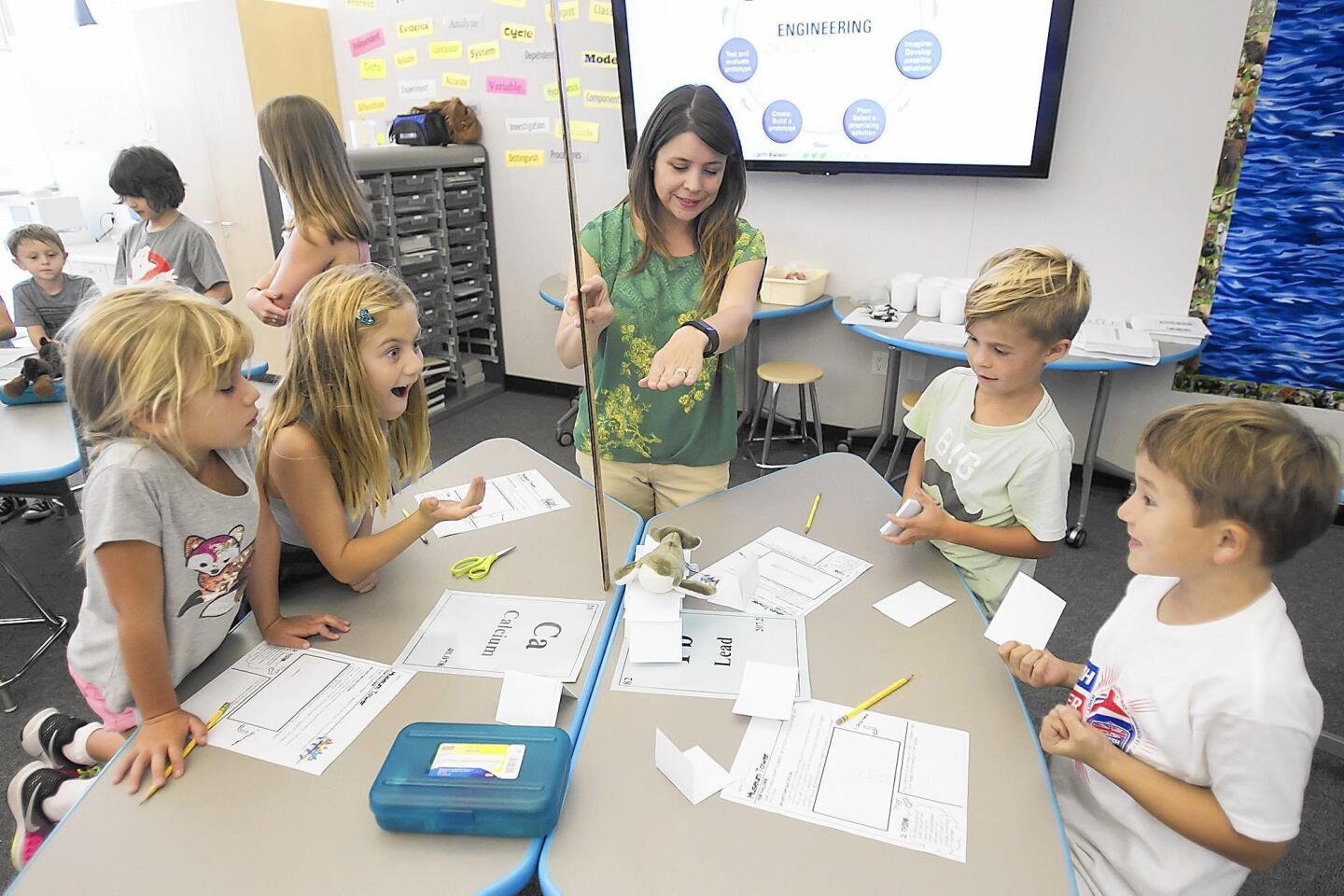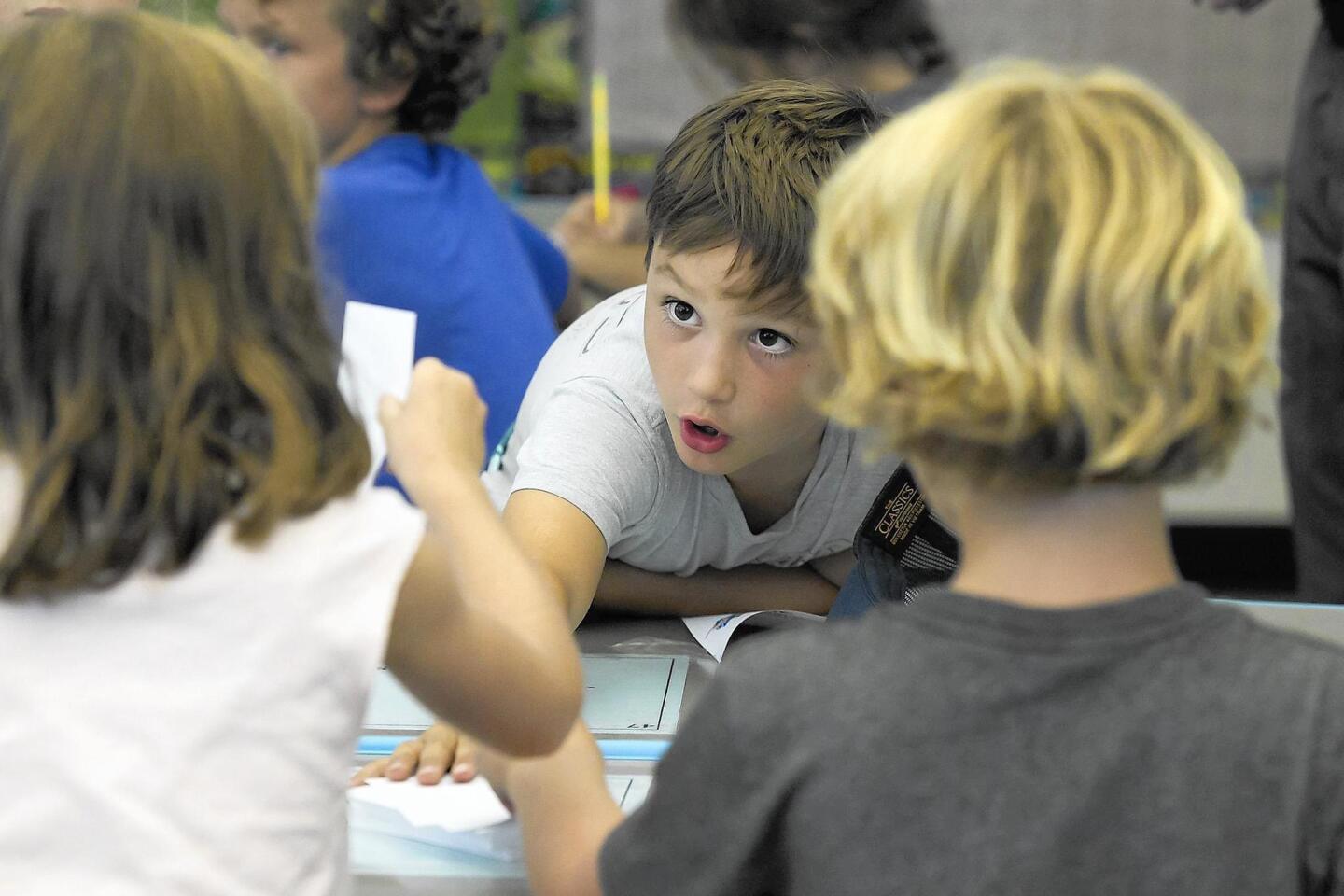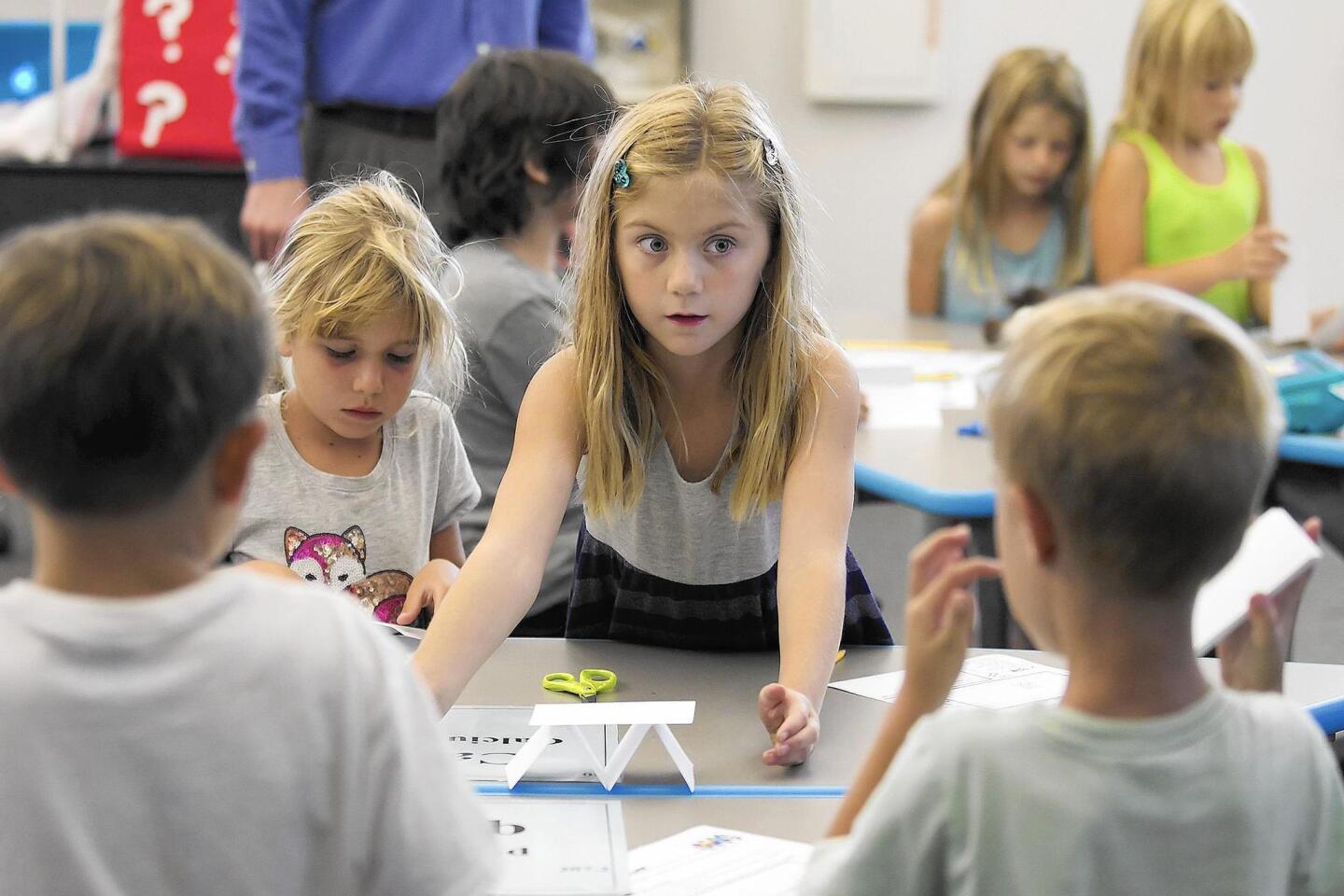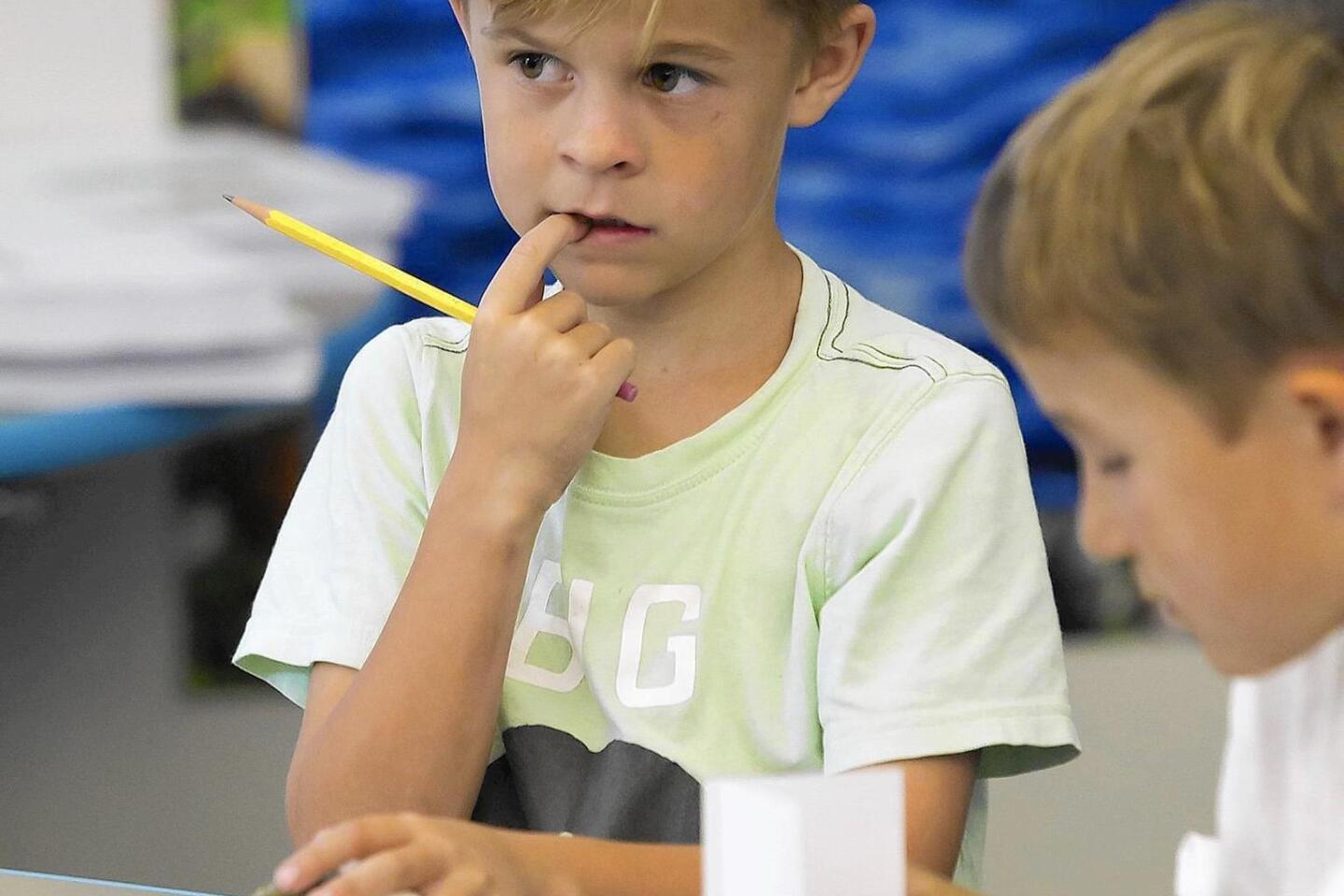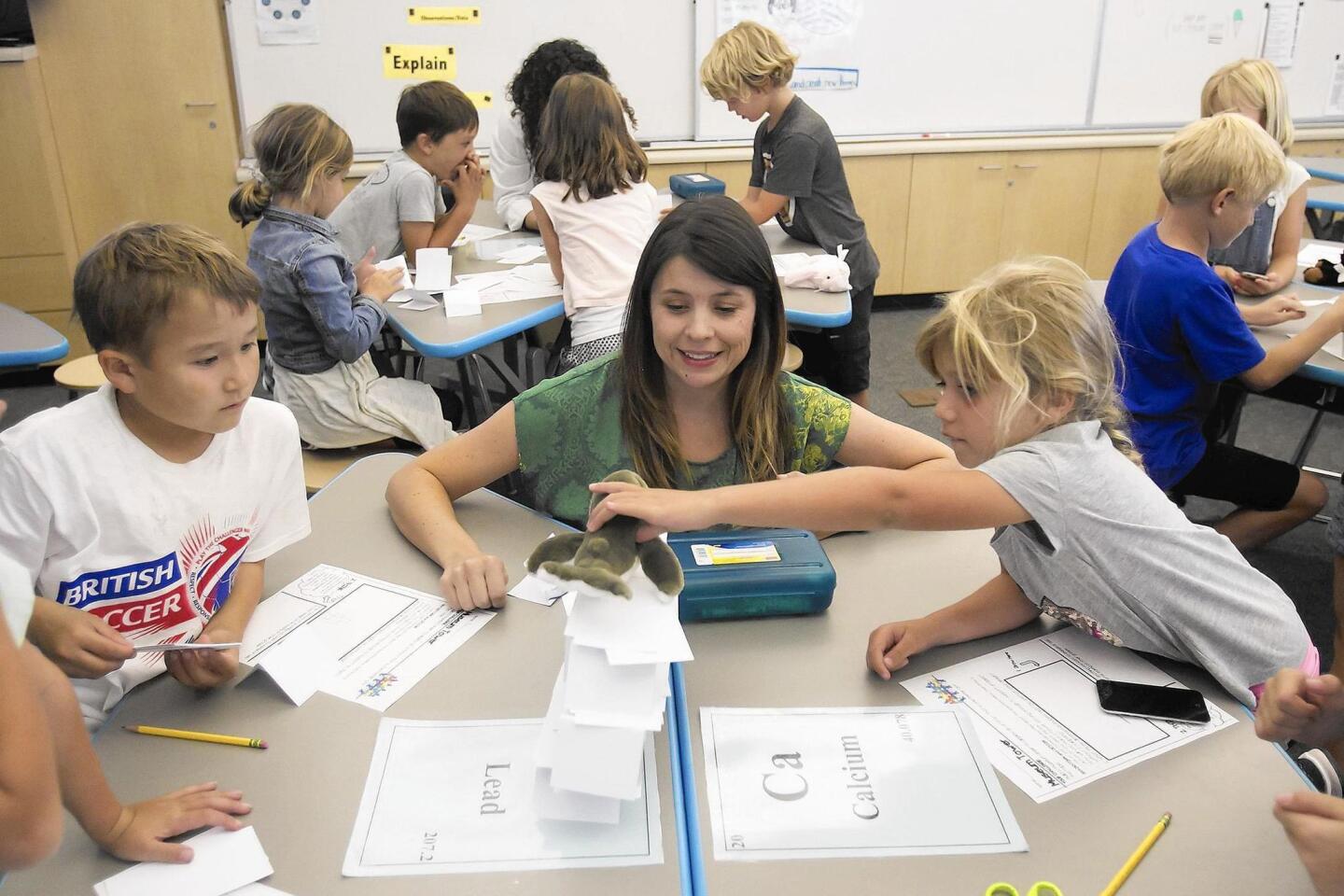Laguna teachers getting early start on new science standards
Laguna Beach Unified School District elementary teachers are getting a head start on new science standards that promote creavity and experimentation rather than rote memorization and replicating procedures.
The Next Generation Science Standards — developed by Achieve, the National Research Council, the National Science Teachers Assn., the American Assn. for the Advancement of Science — are becoming the science equivalent for the critical thinking, interpretation and supportive claims with evidence standards mandated under Common Core’s English and math instruction.
The standards dictate what the students should know once they reach certain grade levels, using concepts that can be applied to life, earth, space and physical sciences. The standards’ creators include two Nobel laureates, cognitive scientists and science education researchers.
“It has been 15 years since science standards were revised ... many advances have occurred in the fields of science and science education, as well as in the innovation-driven economy,” the National Science Teachers Assn. website said. “Unfortunately, science and mathematics achievement continues to lag compared to our international competitors, and this lag has already begun to impact the competitiveness of young Americans as well as the competitiveness of the U.S. in the global economy.”
Laguna Beach Unified’s Assistant Superintendent of Instructional Services Alysia Odipo called the standards, which have been adopted in 17 states, “revolutionary.”
“For me, I learned about what scientists found and replicated it [through an experiment]” Odipo said. “The difference [now] is that we want children to think of themselves as scientists. The goal is for students to develop their own thinking rather than the teacher telling them what to do.”
Educators say the standards take science a step further by getting students to think about long-term patterns and ramifications found in nature.
“In the past, students may have studied the rock cycle as a topic in a geology unit by simply learning to define characteristics of various rock types and reciting the phases in the cycle,” Lauren Madden, assistant professor of elementary education at The College of New Jersey, wrote in a July article published in Education Week.
With the new standards, “They can relate the rock cycle to an important overarching scientific phenomenon — things in nature occur in predictable, cyclical patterns. This shift in focus opens the door for an infinite number of connections across scientific domains, from cell division to star formation,” she wrote.
At Top of the World Elementary earlier this week, Marianne Bynum’s second-grade class created towers out of index cards intended to be strong enough to support the weight of a small stuffed animal.
Bynum challenged her students to construct towers 1 meter tall, but with limited supplies: 100 index cards, one 6-inch piece of tape and scissors.
Bynum said the activity incorporates a key element of the Next Generation standards — engineering.
“Every unit the teachers are teaching has an engineering component, which is different than before,” Bynum said.
Some students folded the cards in half, then stacked them. Others created a square base by taping four index cards together.
If a tower started tilting to one side or wiggled precariously from being top heavy, Bynum walked over and asked its builders what could they do to create a sturdier structure.
Other towers collapsed, but students returned promptly to work, adjusting their design or scrapping it altogether for a new tower.
One group’s tower nearly reached 1 meter. Kai Kaiser, 7, delicately placed a whale stuffed animal on top, hoping the structure would stay stable.
But the whale’s weight was too much for the tower to handle.
“This is way heavy,” Kai said.
“It’s not about the end result as it is about the process,” Bynum noted. “They investigate on their own ... learn to ask questions, test theories and reevaluate.”
Computer-based testing associated with Next Generation standards will replace the paper-and-pencil California Standards Test given to students in grades 5, 8 and 10.
Students in grades 5 and 8, and one high school grade that’s not yet determined, will take Next Generation practice tests later this year and in 2017-18 in preparation for 2018-19, when they’ll take the real tests and schools will begin reporting their Next Generation scores to the state for accountability purposes, state education department spokesman Peter Tira said in an email.
